NIL
Kansas State University
MANHATTAN, Kan. – After his record-tying performance helped the Wildcats to a series win at BYU, K-State’s Keegan O’Connor has been named the Big 12 Newcomer of the Week, the conference office announced Monday. It is the first honor for O’Connor and gives K-State five Big 12 Weekly honors this season, the second most […]
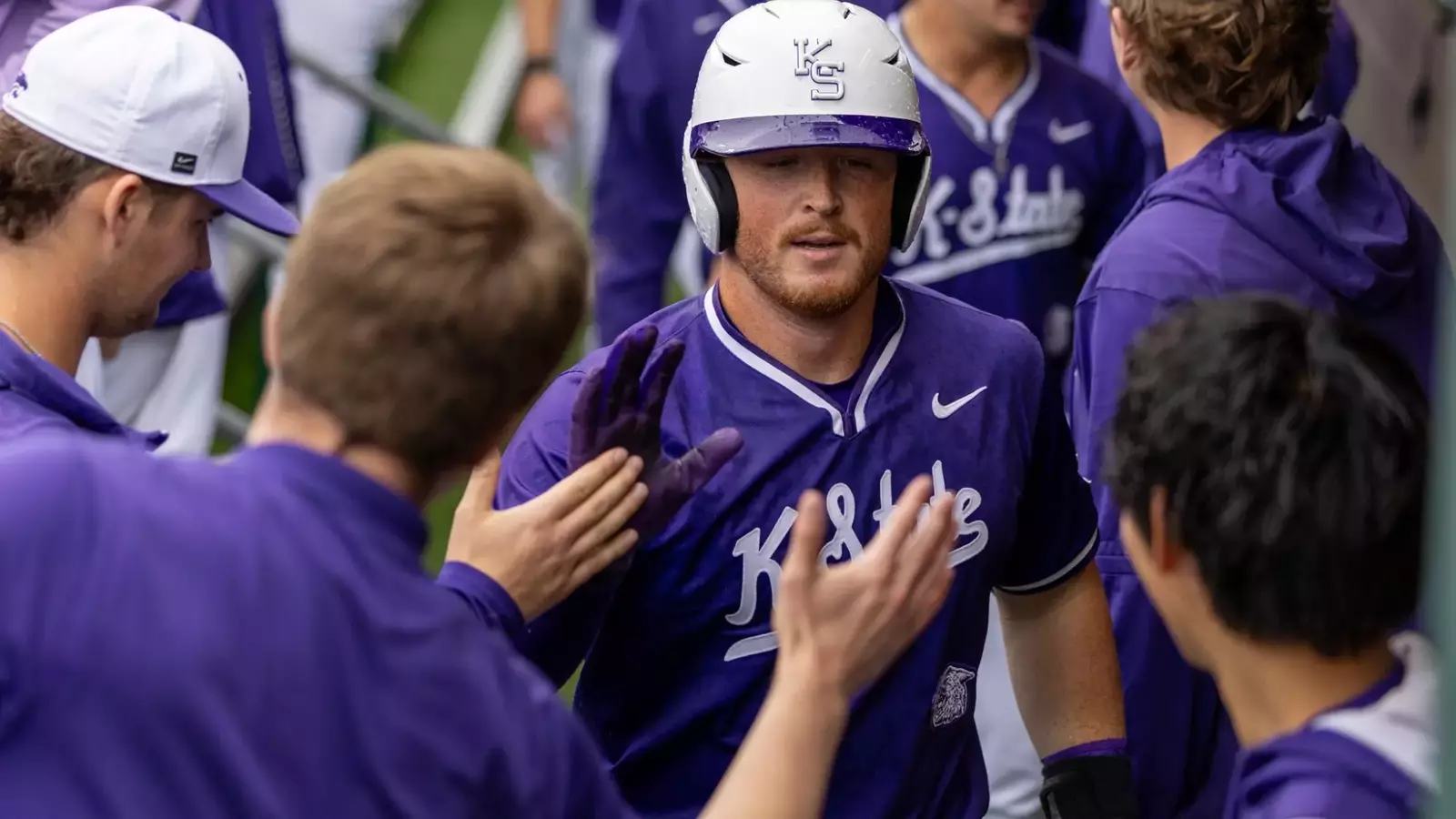
It is the first honor for O’Connor and gives K-State five Big 12 Weekly honors this season, the second most in the conference (Kansas, Arizona State – 7). It is the 25th weekly award K-State has garnered under seventh-year head coach Pete Hughes.
O’Connor tied the program’s single-game home run record in an 18-4 victory over the Cougars on Friday, becoming just the fifth Wildcat in school history to hit three home runs in a game — and the first since 2006.
A native of Andover, Massachusetts, O’Connor finished just a grand slam shy of the home run cycle and a double short of hitting for the cycle, finishing the game going 5-for-6 with six runs batted in and four runs scored. He also became the second Big 12 player this season to hit three homers in a single game.
For the week, the graduate left fielder hit .476 (10-for-21) with a 1.048 slugging percentage and a .500 on-base percentage. Five of his 10 hits were for extra-bases, totaling an incredible 1.548 OPS and driving a team-high eight RBI.
With a team-leading 15 homers on the year, O’Connor is now just one home run away from matching the program’s single-season record. He ties first in the Big 12 with nine home runs in conference play, ranking second overall in the league.
K-State (28-20, 14-10 Big 12) returns to Manhattan, where it owns the best home record in the league this season (16-2), for the final regular-season contests at Tointon Family Stadium against Big 12 leader and No. 12 West Virginia (39-7, 18-4 Big 12), starting Friday, May 9 at 6 p.m.
Single-game tickets for games at Tointon Family Stadium can be purchased by visiting KStateSports.com, call 1-800-221-CATS (2287), or stopping by the K-State Athletics Ticket Office in Bramlage Coliseum.
NIL
Gould, power conference commissioners pledge to follow NIL rules but details sparse
FOLLOWING THE HOUSE v. NCAA SETTLEMENT on Friday allowing schools to directly pay athletes, college commissioners expressed confidence in their ability to end the rules-breaking surrounding NIL. But details were few. The news conference on Monday, as reported by Heather Dinich of ESPN, saw Teresa Gould of the Pac-12 join the four power conference members: the SEC’s Greg Sankey, […]
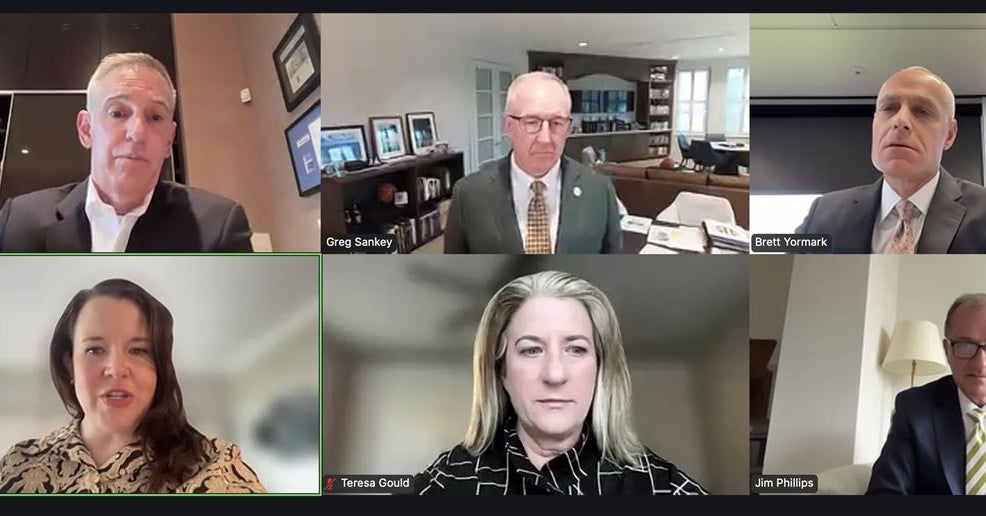
FOLLOWING THE HOUSE v. NCAA SETTLEMENT on Friday allowing schools to directly pay athletes, college commissioners expressed confidence in their ability to end the rules-breaking surrounding NIL. But details were few.
The news conference on Monday, as reported by Heather Dinich of ESPN, saw Teresa Gould of the Pac-12 join the four power conference members: the SEC’s Greg Sankey, the Big Ten’s Tony Petitti, Brett Yormark of the Big 12, and Jim Phillips of the ACC. Gould was present at the meeting because the Pac-12 was a named defendant in the lawsuit.
“If I’m the Pac-12, I’d try to use that fact to argue that since the conference has been included in a detrimental outcome in one case, it should not be shut out from ‘Power’ conference benefits in other instances,” wrote John Canzano in an article today.
Meanwhile, rules breaking in the name, image, likeness world has been rampant since NIL came into being four years ago and penalties have been non-existent. Phillips said all the commissioners had ideas, but nothing they’re “ready to come forward with,” Dinich writes.
Ultimately, Phillips said, the rules and boundaries will be under the purview of Bryan Seeley, the former MLB executive who was just named CEO of a new enforcement organization called the College Sports Commission.
“Now that we have Bryan on board, I think we’ll be able to move a little bit quicker,” said Phillips. “But we want to get this right. It’s one of those areas that until you have somebody leading the College Sports Commission, it’s difficult to get together with that individual and start some of that framework that will be in place.”
In terms of paying athletes, “the annual cap is expected to start at $20.5 million per school in 2025-26 and increase every year during the decade-long deal,” Dinich writes. “Those payments will be in addition to scholarships and other benefits the athletes already receive. Starting June 7, players have to report NIL deals of $600 or more to the College Sports Commission.”
The distribution of $20.5 million to athletes starting July 1 won’t be determined at the conference level, Jon Wilner of the Mercury News reported HERE. “How much to allocate to football, men’s basketball and the Olympic sports will be a campus decision,” Wilner writes.
OBVIOUSLY, CERTAIN SCHOOLS will reach that $20.5 million cap and others will not. For example, Washington State even if it were not in a budget crisis is not going to suddenly be able to spend $20.5 million more.
“We’ve been in an unregulated environment with no rules and no enforcement,” said Phillips. “It has paralyzed the NCAA in Indianapolis, and we’re responsible for certainly some of that. We’re now going to have a foundation and structure laying out those rules. The new structure provides our student-athletes with more opportunities and benefits than ever before.”
The commissioners agreed, however, that in order to “make it work,” they need congressional help to codify rules and provide antitrust protections. What it will all look like with so many unanswered questions still looming is impossible to say.
“But it’s difficult to ignore the leap-of-faith component built into their new world order,” Wilner writes. “College sports has too many athletes with financial needs, too many sources of cash and too many fans who care about winning above all else. The result is a revamped system that’s rooted in best intentions but dependent on a leap of faith.” Click here for Wilner’s article.
Also, here is how Wilner characterized the House settlement on Twitter: “A monumental step forward that’s also deeply flawed and won’t end the chaos. Consider the landmark case as merely the end of the beginning of the revolution.”
Click HERE for the full ESPN article.

BECU is the Official Credit Union of Cougfan.com. Click this box to secure your Cougar-themed credit or debit card today!
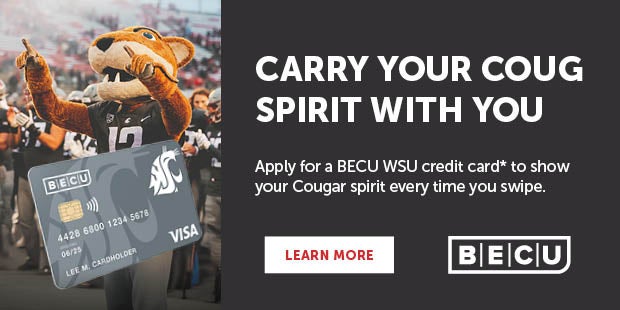
NIL
Amateur Hour Is Over: College Athletes Can Get Paid by Schools
Good morning and welcome to another edition of Free Agent! Hold onto your buckets and your babies—this might be a wild ride. College sports is officially entering a new era. Amateurism is over and professionalism is (mostly) here. Athletes can officially get paid directly by their schools without a workaround involving boosters or a name, […]
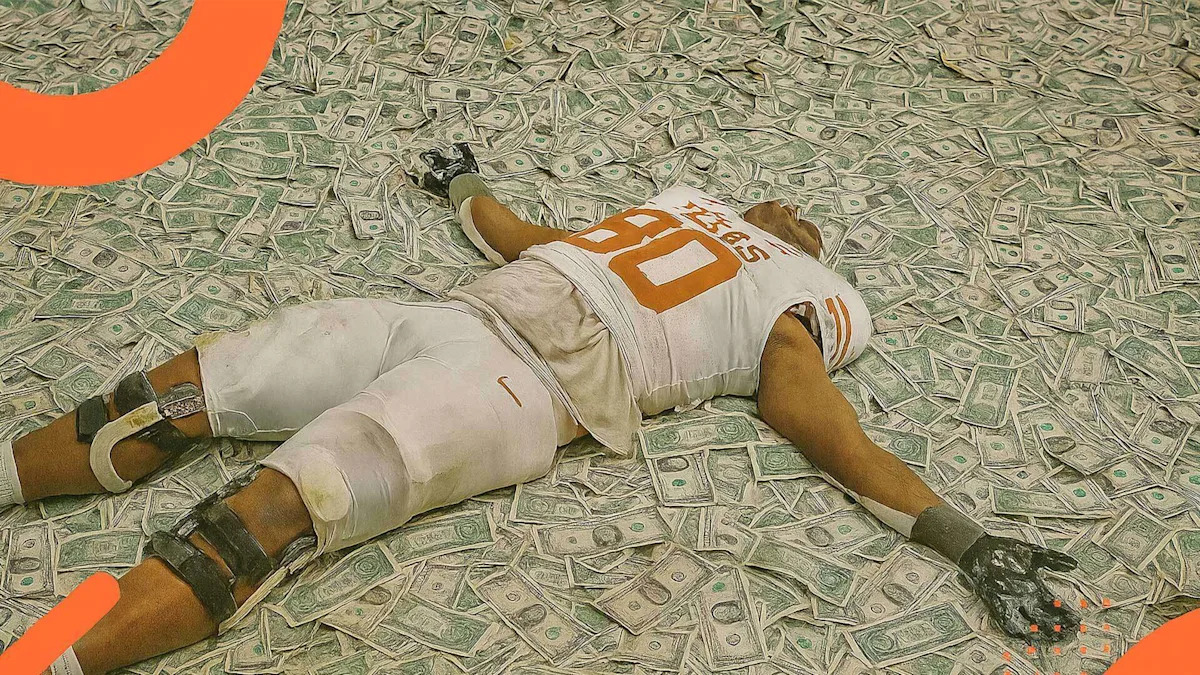
Good morning and welcome to another edition of Free Agent! Hold onto your buckets and your babies—this might be a wild ride.
College sports is officially entering a new era. Amateurism is over and professionalism is (mostly) here. Athletes can officially get paid directly by their schools without a workaround involving boosters or a name, image, and likeness (NIL) collective. Instead of our usual format, the newsletter this week is focused on this monumental change.
Advertisement
But first, I want to thank everyone who voted in our survey last week about who you’re rooting for in the NBA and NHL finals. Free Agent readership was surprisingly evenly split in both series. Shoutout to the fan who said “Seattle kid. Anyone but Thunder.” You’ll have your team soon, I’m sure. As for hockey, I was amused by this response: “I want Ron Desantis to have more Stanley Cups than Canada.” Three down, 40 to go.
Late on Friday, a federal judge gave final approval to a settlement in House v. NCAA, bringing to an end three antitrust cases against the NCAA and power conferences. It’s a huge change: Starting July 1, college sports will spend a decade (at least) in a revenue-sharing system, with schools directly paying athletes for their NIL. Next school year athletic departments will be allowed to pay a combined $20.5 million to athletes across all their sports, with the number rising in the future. (The NCAA and power conferences will also pay almost $2.8 billion in damages to athletes who, dating back to 2016, weren’t allowed to sign NIL deals.)
Advertisement
I talked to Mit Winter, an NIL attorney at Kennyhertz Perry, about how all of this is going to work. Hopefully this answers all the questions you might have about the new system, although a lot of it is still in limbo. I’ve been following this closely and I still learned a lot from our conversation. If you have lingering questions, email me at freeagent@reason.com and I’ll try to figure out an answer for you.
Q: With final approval of the House settlement, colleges will be able to directly pay athletes for the first time. Give us a brief breakdown of how these payments are going to work.
A: Looking forward for college athletics, schools will be able to directly pay their athletes NIL compensation. So they are actively entering into contracts now with their athletes that spell out, “All right, here’s how much we are going to pay you for the use of your NIL in various ways.” That’s obviously a change from how things have worked in the past in college athletics where the cardinal rule was, “Schools, you cannot pay your athletes.”
Q: But the athletes still aren’t technically employees, so that’s causing some other complications, right?
A: Correct, they’re not currently considered employees. These agreements they’re entering into with schools are just NIL licensing agreements. Sometimes they include a services component as well, where the athlete might make appearances or sign autographs or something like that.
Advertisement
Q: But there are some new restrictions on outside NIL deals with boosters?
A: In addition to now allowing schools to directly pay their athletes, the House settlement also contains some new rules around deals athletes can do with NIL collectives and boosters. Athletes will have to disclose to a new clearinghouse entity called the College Sports Commission all third-party NIL deals they do. The College Sports Commission is contracted with Deloitte to do this review process of all of the deals.
If an athlete submits a third-party NIL deal and it’s determined that the deal is with an associated [to the school] entity or individual, then there’s a couple of extra layers of review of that deal. First, the deal has to be for a valid business purpose. Once that determination is made, then the next overview Deloitte will be performing is, “Okay, is the amount being paid to the athlete within what’s being called an appropriate range of compensation for the services being provided by this specific athlete?”
But if Deloitte determines either the deal’s not for a valid business purpose, like they think it’s just a “pay-for-play” booster deal in disguise, or if the amount of compensation being provided to the athlete is not within the appropriate range of compensation, then Deloitte will notify the College Sports Commission that, “Hey, there’s a problem with this deal.” Then at that point it’s up to the College Sports Commission to say, “All right, athlete, you can go ahead and do this deal if you want to, but you might be ineligible to participate in college athletics.”
Advertisement
Q: Some believe this might lead to the old ways of under-the-table payments and recruiting violations.
A: It’s a definite possibility because the amount of NIL compensation that schools could pay their athletes is going to be capped at, for the first year, $20.5 million for the entire year for all of the school’s athletes, so not just the football team. And there are some football teams making well over $20 million in NIL compensation from booster and collective deals for this upcoming season.
So you can see if you have a football team right now taking $30 million, and then in the future, the cap for all of the school’s athletes is going to be $20.5 million, there’s obviously a $10 million gap right there, that if you can’t do it through legitimate deals, third-party NIL deals and Deloitte is shooting down all these third-party deals, that’s when you might go back to under-the-table payments from boosters to win recruiting battles or keep a guy at a school.
Q: Talk to us about this from the conference level.
A: Every Division I school, no matter what your athletics revenue is, you’re going to be able to pay [athletes] up to $20.5 million. That money can come from any source that the university can use to find that money. Obviously, it’s going to be easier to come up with that money for some Division I schools than others. Big Ten and SEC schools might have the easiest time just because the amount of TV revenue those conferences receive and then distribute out to their members is higher than any other conference, including the Big 12 and the ACC. But schools, they’re going to be heavily reliant on donors for sure, but then there are other potential strategies they’re going to use.
Advertisement
There’s a lot of talk about private equity or private capital that some schools might access. There are businesses out there that are very heavily focused now on helping schools generate revenue through different types of creative partnerships, so it’s going to be all over the map in terms of how schools are trying to come up with this new $20.5 million. And then you’ll have some schools that will cut staff. Some have already cut staff, including Oklahoma, who’s an SEC school, obviously, so they’ve cut staff. You’ve had some schools announce they are dropping a few sports, like tennis programs have been dropped in some places, swim and dive teams. So it’s going to vary from school to school on how they come up with this money.
Q: Now, back to the athletes themselves, there are no changes to the transfer system, right? Athletes are still kind of on these one-year contracts, with a fair amount of ability to move at will?
A: Yes, correct. The transfer rules are going to stay the same, they’re not affected by the House settlement at all. Although schools and conferences would love to be able to put some more transfer restrictions back in place and they’re hopeful that Congress will pass a law that gives them an antitrust exemption that would then allow them to put some of those transfer rules back in place because courts have held right now that those transfer rules violate antitrust law.
Some of the contracts that schools are entering into with their athletes, they have some provisions that are trying to prevent as much movement as there has been, like buyouts and clawbacks and things like that. [It] remains to be seen whether those will be effective or not in limiting movement, so we’ll just have to see how that plays out.
Advertisement
Q: There are already some lawsuits challenging the current NCAA eligibility rules, but what lawsuits are coming next, or are already in play after the House settlement?
A: A big one’s going to be Title IX. There will be a lot of Title IX lawsuits, because as we talked about earlier, [schools] will be able to pay out $20.5 million to their athletes, and most schools are planning on paying out, at least if you are a [Power Four] school with a football team, are paying out 75 percent to 80 percent of that $20 million to the football team, around 15 percent to the men’s basketball team, maybe 5 percent to the women’s basketball team, and then 5 percent to other sports, which might be softball, baseball, whatever other sport a school chooses—85 percent to 90 percent of that $20 million is going to go to male athletes. Some people think that’s not in compliance with Title IX, other people think it is. It’s a gray area right now, there’s no black-and-white law. That will be litigated probably in lots of places and there will be probably lots of lawsuits filed against schools on that issue.
I also think we will see some litigation related to the salary cap, because it was not agreed to by a player’s association where, like in pro sports, the salary caps and things like that are collectively bargained with a players association, which makes them exempt from antitrust law. But this salary cap in college athletics is not going to be exempt from antitrust law. So future college athletes coming into college athletics will be able to bring damages, lawsuits, challenging that salary cap, so I think we’ll definitely see some of that.
I think we’ll probably see some more employment litigation for determination that college athletes are employees. There’s already one big case pending on that issue called the Johnson v. NCAA case in federal court. It said college athletes can be employees, it didn’t say they are. It said, “They can, and here’s the test to determine whether they are.” That was an appellate court, it’s now down at the trial court level to actually make that determination. But I definitely think we’ll see some more of that litigation, especially now that you have the schools contracting with athletes. It potentially makes that employment argument stronger than it was before.
Advertisement
This interview has been condensed and edited for style and clarity.
Lots of great candidates this week that you’ve probably already seen, like the Tyrese Haliburton game-winner, a brawl in the Stanley Cup Finals, and perhaps the best home run robbery you’ll ever see (the A’s still lost). But here’s a wild golf shot you probably missed (and that wasn’t even the craziest golf shot this weekend).
That’s all for this week. Enjoy watching the real game of the weekend, the UFL championship game featuring the D.C. Defenders against the Michigan Panthers (Saturday, 8 P.M., on FOX). Many are calling it the Jason Bowl due to my dual loyalties.
The post Amateur Hour Is Over: College Athletes Can Get Paid by Schools appeared first on Reason.com.
NIL
House settlement FAQ
A federal judge approved the settlement of the House v. NCAA class-action lawsuit on Friday, permanently changing the landscape of college athletics. In short, the settlement: Allows for direct revenue sharing from schools to athletes with a cap. Allocates $2.8 billion for NIL back pay to current and former athletes over the next 10 years. […]
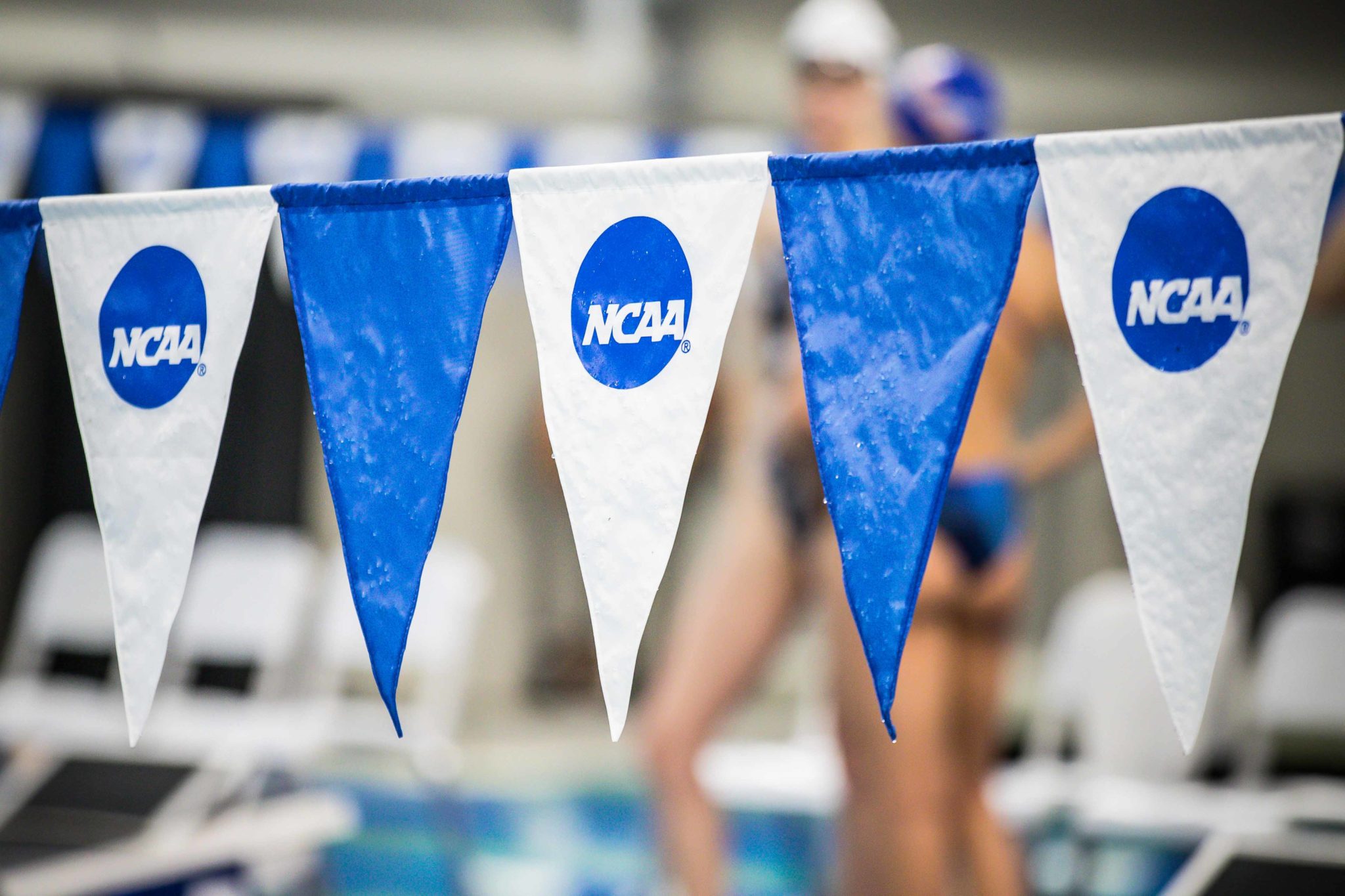
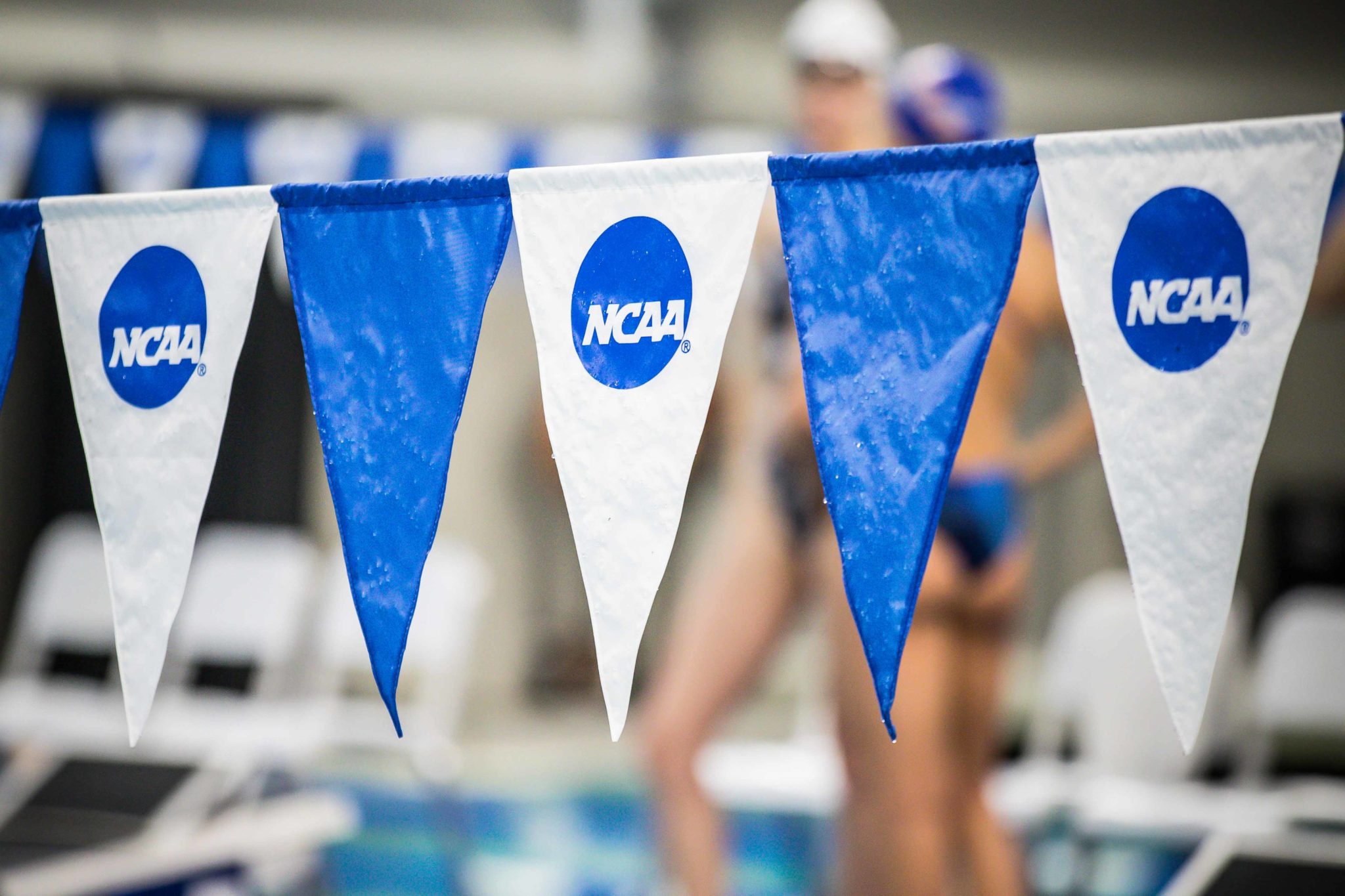

A federal judge approved the settlement of the House v. NCAA class-action lawsuit on Friday, permanently changing the landscape of college athletics. In short, the settlement:
-
Allows for direct revenue sharing from schools to athletes with a cap.
-
Allocates $2.8 billion for NIL back pay to current and former athletes over the next 10 years.
-
Limits the number of roster spots for college teams.
Here’s how the settlement will impact NCAA Division I schools moving forward, and some refreshers on the state of modern college athletics.
» READ MORE: Big changes coming in college sports after Federal judge approves settlement. Here’s what to know.
Name, image, and likeness deals
College athletes are able to receive third-party compensation generated by their personal brand, otherwise known as their name, image, and likeness (NIL).
After a unanimous Supreme Court ruling that decided the NCAA was in violation of antitrust laws, the top governing body for college athletics changed the rules that prohibited third-party payment to athletes.
Since July 1, 2021, athletes have been able to receive financial compensation through NIL endorsements.
Is there a difference between revenue sharing and NIL payments?
Yes. As outlined in the House settlement, revenue sharing will allow schools to directly compensate athletes for the use of their name, image, and likeness. There is a cap on the amount of funds schools will be able to distribute annually. The limit is estimated to be $20.5 million this season, although the figure is not official yet.
Athletes will still be eligible to receive NIL compensation from third parties on top of any compensation they may receive from their athletic departments.
The Ivy League said in January that the conference would not opt in to the revenue sharing agreement outlined in the House settlement. However, Ivy athletes will still be able to benefit from third-party NIL opportunities.
NIL opportunities from university-associated collectives must be paid “for a valid business purpose” at “fair market value rates,” according to Temple’s House settlement FAQ page. The House settlement establishes NIL Go, a clearinghouse overseen by Deloitte. Athletes will report their NIL deals worth at least $600 on the platform, and NIL Go will confirm that the deals are within the rules.
When can athletes enter the transfer portal?
It varies by sport. Windows for fall sports typically open in late November or early December and close in late December or early January. For winter sports, portal periods usually begin in March and close anywhere from mid-April to mid-May. Spring sports windows typically open in early May and close by late May or June.
Can an athlete transfer and play the next season?
Yes. In April 2024, the NCAA adopted new transfer rules that permitted athletes to transfer between schools and be immediately eligible to play, regardless of how many times they had transferred.
Before that change, athletes were required to redshirt after their second transfer, as well as any potential following moves. The NCAA’s rules regarding transfers have relaxed since 2021, when it adopted the second-transfer redshirt rule. Before then, athletes who transferred were deemed ineligible for the following season and forced to redshirt.
» READ MORE: Villanova’s basketball team should benefit from the NIL settlement, but little else is immediately clear
What does the House settlement do?
The House settlement will impact college sports in three main ways. It establishes a direct revenue-sharing model between D-I schools and their athletes, allocates $2.8 billion in NIL back pay to be paid out to former and current college athletes, and creates roster limits for all teams.
Starting July 1, athletic departments will be able to compensate athletes directly from their revenues. The $20.5 million cap figure is an estimate of 22% of the average athletic revenue of a power-conference institution, and will act as a hard cap on direct spending for high-revenue athletic departments.
The NCAA and its schools will distribute NIL back pay to approximately 400,000 current and former athletes over the next 10 years. Of the $2.8 billion, 60% will be funded through reduced revenue distribution, while the NCAA will generate the remaining 40% on its own.
The settlement places firm roster limits on opted-in Division I teams for 2025-26 season. At the suggestion of the judge overseeing final approval, Claudia Wilken, the settlement has been revised to protect the spots of athletes currently on rosters, athletes who were cut this year, or high school athletes who were promised a spot, only to see it eliminated.
Does every school have to follow the House settlement?
No. Schools in the ACC, Big 10, Big XII and SEC are required to adhere to the terms of the settlement, and all in those conferences have indicated the intent to do so. The remaining Division I schools have until June 15 to decide whether to opt in or out of the settlement.
In the Big 5, Temple and Drexel have publicly stated the intent to opt in. Villanova, La Salle, and St. Joseph’s are all expected to do so as well. As a member of the Ivy League, Penn will opt out of the terms of the settlement. It will be unable to share revenue with its athletes.
» READ MORE: Temple opts into House v. NCAA settlement, setting the stage for revenue sharing on North Broad
What happens next?
There is a potential for more legal movement to further impact the landscape of college athletics. The House settlement does not address whether athletes can be classified as employees, an idea that has been examined by Johnson v. NCAA. The case, brought by former Villanova football player Trey Johnson, remains in litigation.
The NCAA and its president, Charlie Baker, have led an effort to lobby Congress in favor of a bill that would grant antitrust protection to the NCAA, based on the terms of the House settlement. Sen. Ted Cruz (R-Texas) has been pushing a bill that would introduce regulations to college sports since the Republicans took control of the House of Representatives and the Senate in January.
Regardless of further legal movement, the effects of the House settlement will change the way athletic departments, individual teams, and college sports operate.
NIL
Tennessee law supersedes NCAA eligibility rule
Attorneys for former Tennessee basketball player Zakai Zeigler are trying to utilize a new state law curtailing the NCAA’s authority to get him an additional year of eligibility. It’s the latest twist in Zeigler’s federal lawsuit against the NCAA, which challenges the so-called “Four Seasons” rule. The NCAA allows athletes to play four seasons during […]

Attorneys for former Tennessee basketball player Zakai Zeigler are trying to utilize a new state law curtailing the NCAA’s authority to get him an additional year of eligibility.
It’s the latest twist in Zeigler’s federal lawsuit against the NCAA, which challenges the so-called “Four Seasons” rule. The NCAA allows athletes to play four seasons during a five-year period, which can include a redshirt year.
Zeigler ran out of NCAA eligibility by playing the past four seasons for UT basketball and not taking a redshirt. He wants to play a fifth season and earn millions of dollars in NIL pay. His attorneys say the NCAA does not have the authority in the state of Tennessee to stop him.
The new Tennessee law, Senate Bill 536, allows Tennessee universities and athletes to opt out of NCAA rules if they appear to violate antitrust law. The initial purpose was to shift liability toward the NCAA and conferences and away from the schools in anticipated antitrust lawsuits by athletes unhappy with new player-pay rules in college sports.
But broad language in the law – which has not been litigated in any court – strips the NCAA of its power if the association prohibits a Tennessee athlete from earning money. Zeigler’s attorneys are seizing on that portion to push for a preliminary injunction that would grant him a fifth year of eligibility.
“(The new Tennessee law is) unambiguously clear: Any NCAA action that impacts an athlete’s ability to earn NIL compensation or his or her eligibility, like the Four-Seasons Rule, is illegal in Tennessee,” Zeigler’s attorneys argued in a brief filed to the Eastern District of Tennessee federal court on June 7.
NCAA says Tennessee law is irrelevant in Zakai Zeigler case
The NCAA countered, accusing Zeigler of exploiting a law that doesn’t apply to his case.
“(Zeigler’s brief) continues his effort to dismantle the NCAA membership’s longstanding eligibility rules by any means necessary — this time through a tortured reading of an irrelevant law,” NCAA attorneys wrote in a brief to the court on June 8.
“Common sense dictates that the new Tennessee statute has nothing to do with this case.”
The law appeared to be in response to Tennessee v. NCAA, a separate federal lawsuit that challenged the NCAA’s rules that prohibited schools from facilitating NIL negotiations with players and recruits.
Tennessee and the NCAA reached a settlement in that case in January, the same month that Senate Bill 536 was introduced in the legislature. The new law was signed by Gov. Bill Lee on May 1, and it sparked a fight between UT and power conferences about whether the school had to follow new player-pay rules set forth in the House settlement.
However, a provision in the new law said the NCAA shall not “interfere with, prohibit, restrict, or otherwise adversely affect an intercollegiate athlete’s ability to earn compensation … and shall not otherwise impact an intercollegiate athlete’s eligibility or full participation in intercollegiate athletic events.”
Zeigler has used that language in his fight against the NCAA. Federal Judge Katherine Crytzer could invalidate the state law altogether if she wants.
Should Tennessee or NCAA decide if Zeigler can keep playing?
Zeigler has a guaranteed spot on Tennessee’s 2025-26 basketball roster if Crytzer allows it. The latest hearing was held in Knoxville on June 6, and both sides are jockeying for a stronger position.
Zeigler’s attorney, Alex Little, told the judge that Zeigler intends to play for the Vols and was told he had a spot on the team. But Little also said the NCAA wouldn’t be able to restrict Zeigler’s entrance into the transfer portal, presumably meaning if his injunction request was approved, Zeigler would have the option to play at another school, not just UT.
The NCAA argues that its eligibility rules are clear, and Zeigler cannot exceed them. But Zeigler’s attorneys say that the law allows UT to determine who plays on its teams, not the NCAA.
“(The NCAA) argued that the phrase ‘can . . . participate’ means that Mr. Zeigler must be eligible to participate under its own eligibility rules,” Zeigler’s attorneys argued in a brief. “But this argument assumes its own premise: that the NCAA — rather than the institution — determines who gets to ‘participate in an athletic program (at an institution).’”
NCAA says UT can’t support Zeigler and agree to NCAA rules
The NCAA sees a contradiction in UT’s apparent support of Zeigler and its acceptance of NCAA eligibility rules. After all, member schools like UT make up the NCAA and adopt its rules.
The House settlement, which resolved three federal antitrust lawsuits against the NCAA and four power conferences (ACC, Big Ten, Big 12, SEC), could strengthen the NCAA’s position in the Zeigler case. The settlement was approved on June 6, just hours after the conclusion of Zeigler’s hearing, and reinforced eligibility rules.
The House settlement permitted the NCAA and conferences to cap the number of years an athlete is eligible to receive payments at four years plus a redshirt year, providing that all four of those seasons must be played within a consecutive five-year period.
The SEC, which includes UT as a member, agreed to that settlement.
“The State’s flagship institution (which happens to be the school Plaintiff attended) is a member of an athletic conference that has agreed to a settlement that expressly affirms the NCAA’s Four-Seasons Rule,” NCAA attorneys argued in a brief. “That same institution, the University of Tennessee, obtained valuable legal releases pursuant to that settlement and unsurprisingly has repeatedly endorsed it.
“It is accordingly hard to imagine the Tennessee legislature passing a law so obviously at odds with the University of Tennessee’s legal position and interests.”
Adam Sparks is the Tennessee football beat reporter. Email adam.sparks@knoxnews.com. X, formerly known as Twitter@AdamSparks. Support strong local journalism by subscribing at knoxnews.com/subscribe.
Get the latest news and insight on SEC football by subscribing to the SEC Unfiltered newsletter, delivered straight to your inbox.
NIL
Revenue sharing, NIL, roster limits and more
The “CSC,” as you’ll also see it referenced, is basically taking over as the investigative and enforcement arm of college sports, replacing the role held previously by the NCAA. It’s a joint creation of the Power 4 conferences to ensure the settlement is operated and its NIL and revenue-sharing rules are enforced properly. The CSC […]
The “CSC,” as you’ll also see it referenced, is basically taking over as the investigative and enforcement arm of college sports, replacing the role held previously by the NCAA. It’s a joint creation of the Power 4 conferences to ensure the settlement is operated and its NIL and revenue-sharing rules are enforced properly. The CSC will be headed up by CEO Bryan Seeley, who has spent the past decade working for Major League Baseball, currently as its executive vice president of legal and operations having been tabbed in 2014 to head MLB’s investigation department after a career as a federal prosecutor and an assistant U.S. Attorney for the Department of Justice’s public corruption section.
CBS Sports national college football reporter Brandon Marcello wrote that the CSC will be “a smaller, more agile version of the NCAA’s enforcement arm.” Seeley, who led the investigations into MLB’s sign-stealing scandals with the Houston Astros and Boston Red Sox, “will have the final say on settlement-related items and enforcement of fair market value NIL deals of greater than $600,” per Marcello’s sources, who added that Seeley “is expected to have considerable latitude to penalize as they see fit.” Players could be ruled ineligible for accepted deals flagged by the “NIL Go” clearinghouse, which will give ranges on what deals should be worth based on market data.
The expectation is the CSC will conduct and conclude investigations in a more timely manner than the NCAA’s never-ending process, and ideally it would operate with greater transparency.
Again, though, the CSC attempting to cap what athletes can earn almost certainly will lead to legal challenges.
NIL
What will the new NIL rules actually mean for Alabama?
We’re entering a new era of college football where colleges will now be able to pay players directly. And we’re looking at new scrutiny for so-called pay-to-play NIL deals. Michael Casagrande joins us to break down what the bombshell NCAA House settlement could mean for Alabama’s future. Later, he competes against producer Matt Scalici to […]
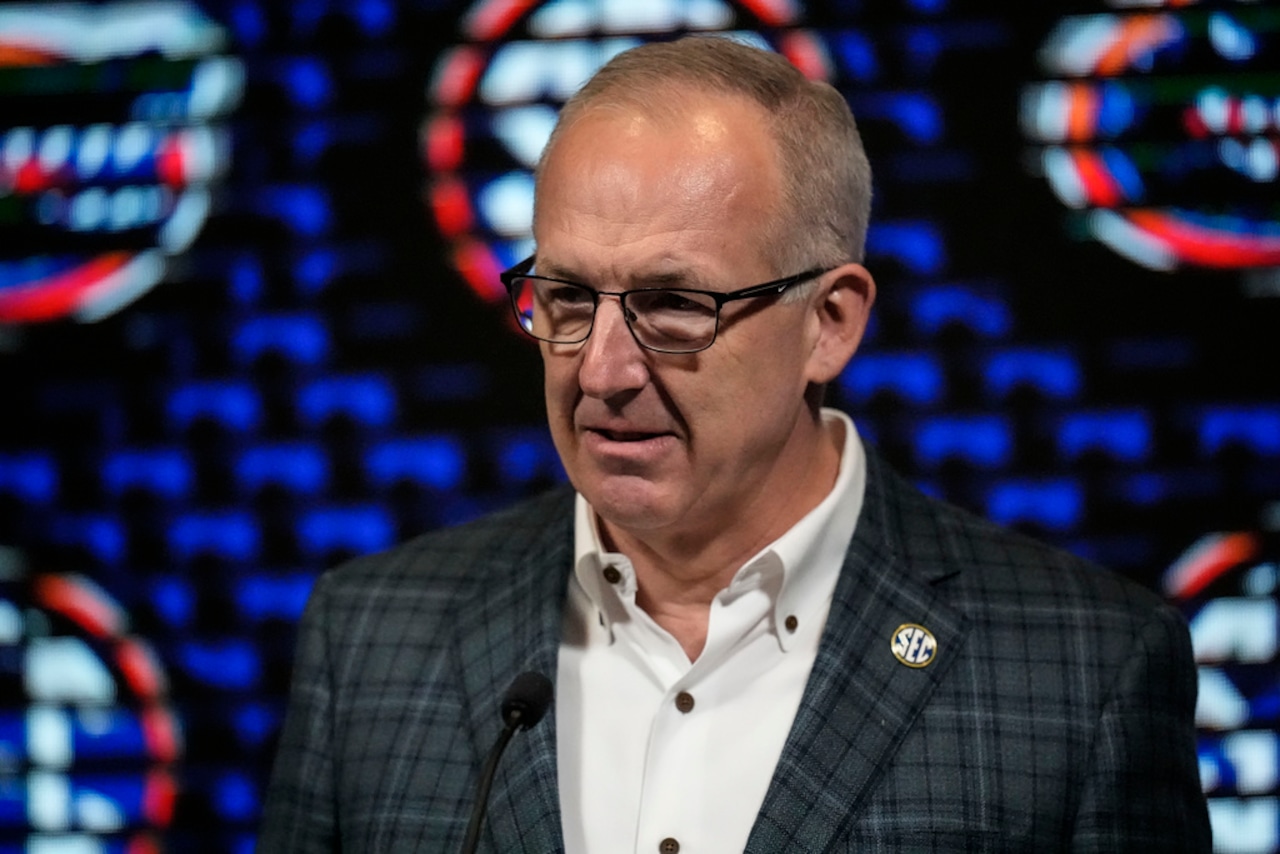
We’re entering a new era of college football where colleges will now be able to pay players directly. And we’re looking at new scrutiny for so-called pay-to-play NIL deals. Michael Casagrande joins us to break down what the bombshell NCAA House settlement could mean for Alabama’s future.
Later, he competes against producer Matt Scalici to draft a coaching staff made up entirely of former Nick Saban assistants.
Beat Everyone is available on YouTube, Apple Podcasts, Spotify or wherever you get your podcasts. Follow the show on your favorite platform to automatically receive new episodes every Tuesday and Thursday.
-

 Professional Sports3 weeks ago
Professional Sports3 weeks agoJon Jones answers UFC retirement speculation as fans accuse champion of 'holding the belt …
-

 NIL2 weeks ago
NIL2 weeks ago2025 NCAA Softball Tournament Bracket: Women’s College World Series bracket, schedule set
-

 Motorsports3 weeks ago
Motorsports3 weeks agoWhy IHOP Rode With Dale Earnhardt Jr. In Amazon NASCAR Debut
-

 Health5 days ago
Health5 days agoOregon track star wages legal battle against trans athlete policy after medal ceremony protest
-

 College Sports1 week ago
College Sports1 week agoIU basketball recruiting
-

 Professional Sports5 days ago
Professional Sports5 days ago'I asked Anderson privately'… UFC legend retells secret sparring session between Jon Jones …
-

 Youtube3 weeks ago
Youtube3 weeks agoAnt greets A-Rod & Barry Bonds before Game 3
-

 Rec Sports2 weeks ago
Rec Sports2 weeks agoJ.W. Craft: Investing in Community Through Sports
-

 Professional Sports5 days ago
Professional Sports5 days agoUFC 316 star storms out of Media Day when asked about bitter feud with Rampage Jackson
-

 Rec Sports2 weeks ago
Rec Sports2 weeks agoScott Barker named to lead CCS basketball • SSentinel.com


























 Stephen A. responds to LeBron’s NBA coverage criticism | First Take
Stephen A. responds to LeBron’s NBA coverage criticism | First Take








